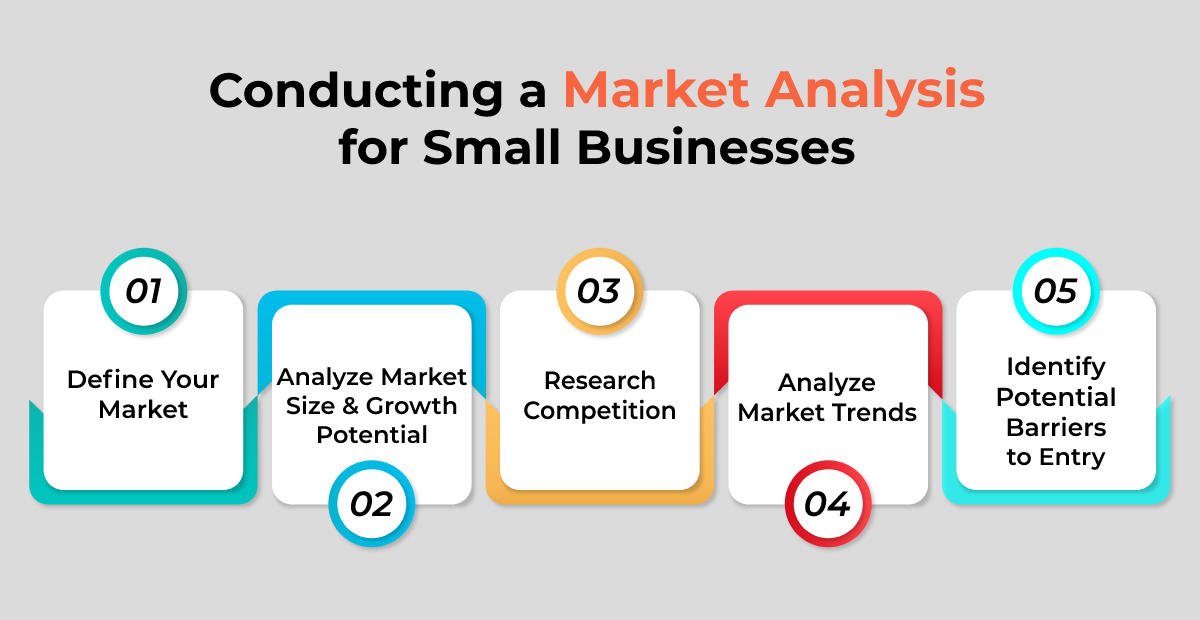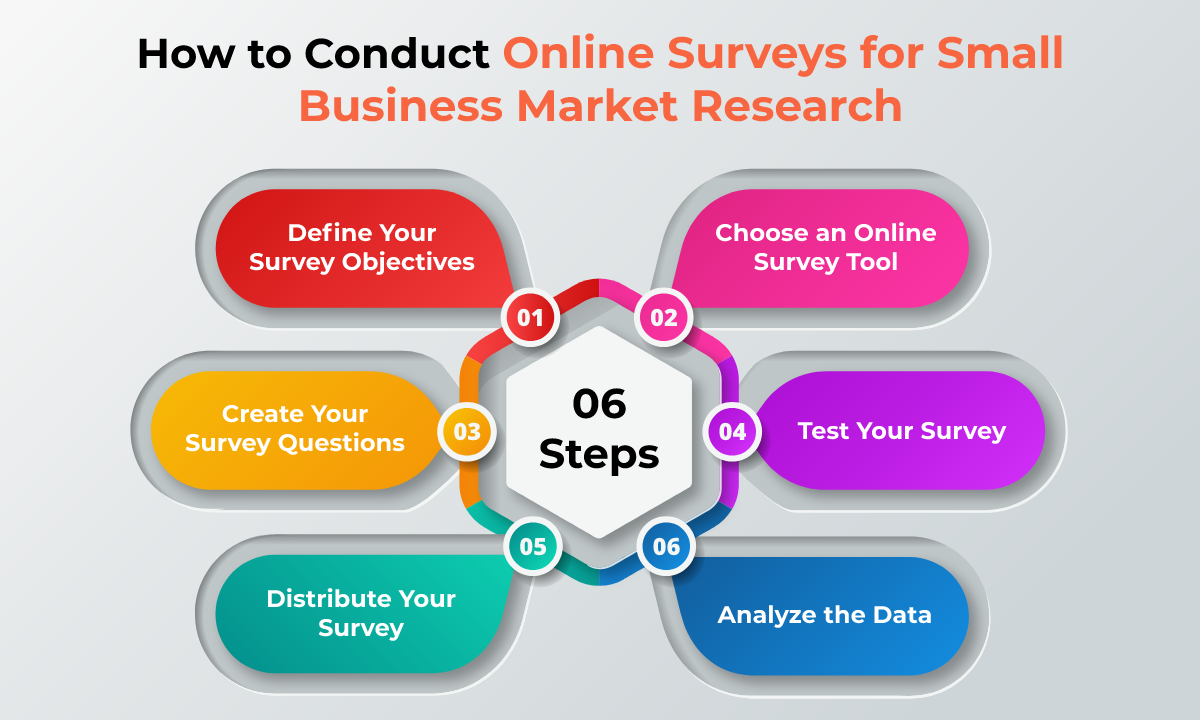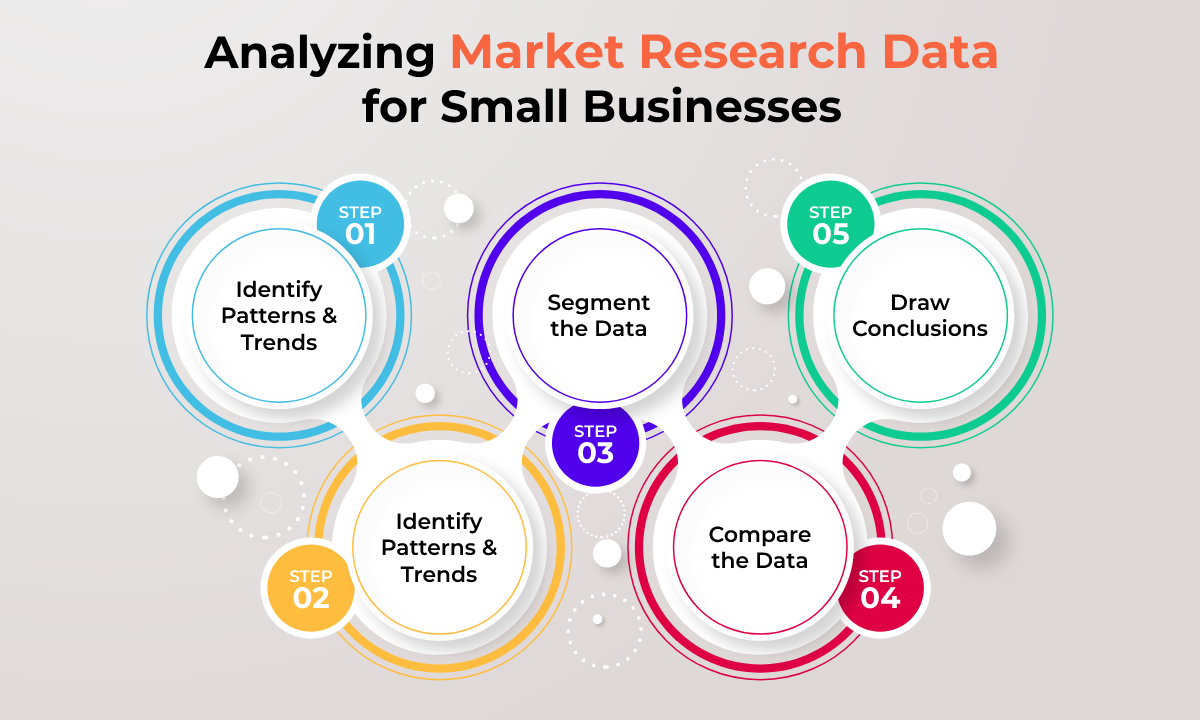Market Research for Small Businesses: The Key to Success
Table of Contents
- Why Market Research is Important for Small Businesses
- Conducting a Market Analysis for Small Businesses
- Conducting a Competitor Analysis for Small Businesses
- Conducting a Customer Analysis for Small Businesses
- How to Conduct Online Surveys for Small Business Market Research
- Analyzing Market Research Data for Small Businesses
- How to Segment Your Market for Small Business Success
- How to Build a Strong Brand for Your Small Business
- Market Research and Business Plan Writing Services
- Conclusion
- Looking for a business plan advisor?
- FAQs:
Get our business planning services for planning the best business plan.
As a small business owner, you know how competitive the market can be. You need to find ways to differentiate yourself from your competitors and attract customers. This is where market research comes in.
It provides you with valuable insights into your target audience, competition, and market trends, which can help you make informed decisions about your products and services. In this article, we will explore the importance of market research for small businesses and provide practical tips on how to conduct it effectively.
Why Market Research is Important for Small Businesses
Market research is the process of gathering and analyzing data to inform business decisions. It involves collecting information about customer needs, preferences, and behaviors, as well as market trends and competition.
For small businesses, market research is particularly important because it helps them understand their target market and make informed decisions about their products and services.
By conducting market research, small businesses can identify potential opportunities for growth and development, make data-driven decisions, and ultimately increase their chances of success. While it can be time-consuming and expensive, it is worth the investment for small businesses looking to succeed in the market.
Conducting a Market Analysis for Small Businesses
A market analysis is an important part of market research, as it provides an overview of the industry, market size, trends, and potential opportunities and challenges. Here are the steps to follow when conducting a market analysis for your small business:
- Define your market: Identify the specific market you are targeting, such as geographic location, demographics, psychographics, and buying behavior.
- Analyze the market size and growth potential: Determine the size of your target market and its potential for growth. Look at historical data and current trends to predict future growth.
- Research competition: Identify and research your competitors, including their strengths, weaknesses, and market share. This will help you understand how you can differentiate your business from competitors.
- Analyze market trends: Look at trends in the industry and market, including consumer behavior, new products and services, and changes in technology.
- Identify potential barriers to entry: Determine any potential obstacles to entering the market, such as regulatory requirements, high costs, or strong competition.
By conducting a thorough market analysis, small businesses can identify potential opportunities and challenges and develop effective strategies to succeed in the market.
Conducting a Competitor Analysis for Small Businesses
Analyzing your competitors is a critical part of market research for small businesses. By understanding your competitors’ strengths, weaknesses, and strategies, you can identify opportunities to differentiate your business and gain a competitive advantage. Here are the steps to follow when conducting a competitor analysis:
- Identify your competitors: Make a list of your direct and indirect competitors, including their strengths, weaknesses, and market share.
Analyze their products and services: Look at the products and services your competitors offer, their quality, pricing, and marketing strategies.
Evaluate their strengths and weaknesses: Identify your competitors’ strengths, such as brand recognition or distribution channels, and weaknesses, such as poor customer service or low product quality.
Look at their marketing and advertising: Analyze your competitors’ marketing and advertising strategies, including their messaging, channels, and target audience.
Identify opportunities and threats: Based on your analysis, identify potential opportunities to differentiate your business and gain a competitive advantage, as well as potential threats to your business.
By conducting a competitor analysis, small businesses can develop effective strategies to differentiate themselves and gain a competitive advantage.
You can download the free swot analysis examples to conduct a competitive analysis.
Conducting a Customer Analysis for Small Businesses
Understanding your customers’ needs, preferences, and behavior is crucial for small businesses looking to succeed in the market. By conducting a customer analysis, small businesses can gain insights into their customer’s buying behavior, attitudes, and preferences. Here are the steps to follow when conducting a customer analysis:
- Identify your target audience: Determine the specific group of customers you want to target, including demographics, psychographics, and behavior.
- Conduct market research: Gather data on your customers’ buying behavior, preferences, and attitudes. You can use surveys, focus groups, or online analytics tools to gather this information.
- Analyze the data: Once you have gathered the data, analyze it to identify patterns and trends. Look for commonalities in your customers’ behavior, preferences, and attitudes.
- Create customer personas: Based on the data you have gathered, create customer personas to represent your target audience. This will help you understand your customers better and create targeted marketing strategies.
- Use the insights to improve your marketing strategy: Use the insights gained from your customer analysis to create more effective marketing strategies. For example, if you learn that your customers value sustainability, you can incorporate sustainable practices into your business and marketing strategies.
By conducting a customer analysis, small businesses can gain valuable insights into their target audience, which can inform their marketing and business strategies.
How to Conduct Online Surveys for Small Business Market Research
Online surveys are a cost-effective and efficient way to gather data from customers and potential customers. Here are the steps to follow when conducting online surveys for small business market research:
- Define your survey objectives: Determine the specific information you want to gather through the survey, such as customer preferences or satisfaction.
- Choose an online survey tool: There are many online survey tools available, such as SurveyMonkey or Google Forms. Choose one that meets your needs and budget.
- Create your survey questions: Create clear and concise survey questions that will provide the information you need. Avoid leading or biased questions.
- Test your survey: Before sending out your survey, test it with a small group of people to identify any errors or confusion.
- Distribute your survey: Send your survey to your target audience through email, social media, or your website.
- Analyze the data: Once you have gathered the data, analyze it to identify patterns and trends. Look for commonalities in your customers’ behavior, preferences, and attitudes.
By conducting online surveys, small businesses can gather valuable data from their target audience and use it to inform their business decisions and strategies.
Analyzing Market Research Data for Small Businesses
Once you have gathered market research data, it is essential to analyze it to identify patterns and trends. Here are the steps to follow when analyzing market research data for small businesses:
- Identify patterns and trends: Look for commonalities in the data, such as trends in customer preferences or behavior
- Identify patterns and trends: Look for commonalities in the data, such as trends in customer preferences or behavior. Use charts, graphs, or tables to help identify patterns and trends.
- Segment the data: Segment the data based on variables such as demographics or behavior. This will help you understand how different groups of customers behave or what their preferences are.
- Compare the data: Compare the data from different sources, such as online surveys and focus groups, to identify similarities and differences.
- Draw conclusions: Based on your analysis, draw conclusions about your target audience, competition, and market trends. Use this information to inform your business decisions and strategies.
By analyzing market research data, small businesses can gain valuable insights into their target audience, competition, and market trends, which can inform their business decisions and strategies.
How to Segment Your Market for Small Business Success
Segmenting your market involves dividing your target audience into smaller groups based on specific characteristics, such as age, income, or behavior. Here are the steps to follow when segmenting your market for small business success:
- Define your target audience: Identify the specific group of customers you want to target.
- Determine your segmentation criteria: Choose the specific criteria you want to use to segment your market, such as demographics, psychographics, or behavior.
- Gather data: Gather data on your target audience that will allow you to segment them according to your criteria. You can use surveys or focus groups to gather this information.
- Segment your market: Segment your market based on your criteria. You can use software tools or manual methods to segment your market.
- Develop targeted marketing strategies: Once you have segmented your market, develop targeted marketing strategies for each segment. For example, if you are targeting different age groups, you might develop different marketing strategies for each group.
By segmenting their market, small businesses can create targeted marketing strategies that are more effective in reaching their target audience.
How to Build a Strong Brand for Your Small Business
Building a strong brand is essential for small businesses looking to differentiate themselves from their competitors and attract customers. Here are the steps to follow when building a strong brand for your small business:
- Define your brand identity: Determine the unique characteristics that define your brand, such as your mission statement, values, and personality.
- Develop your visual identity: Create a visual identity that reflects your brand, such as your logo, color scheme, and typography.
- Create brand messaging: Develop messaging that communicates your brand identity and resonates with your target audience.
- Consistently communicate your brand: Ensure that all aspects of your business consistently communicate your brand, including your website, social media, and marketing materials.
- Build brand recognition: Use marketing strategies to build brand recognition, such as advertising or influencer marketing.
By building a strong brand, small businesses can differentiate themselves from their competitors and build brand loyalty among their target audience.
Market Research and Business Plan Writing Services
If you’re a small business owner looking to conduct market research or write a business plan, you may want to consider working with a professional service provider.
Market research services can help you gather and analyze data about your target audience, competition, and industry trends, while business plan writing services can help you create a comprehensive plan for starting or growing your business.
Working with a market research or business plan writing service can save you time and ensure that you are making informed decisions based on reliable data and expert analysis. Additionally, these services can provide you with valuable insights and recommendations that you may not have considered otherwise.
When choosing a market research or business plan writer, be sure to look for a provider with a proven track record of success and experience in your industry. You may also want to consider the cost and level of customization offered by the service, as well as the qualifications and expertise of the team.
Overall, investing in market research and a well-written business plan can help you set your small business up for success and achieve your goals in the competitive market.
Conclusion
In conclusion, market research is essential for small businesses looking to succeed in today’s competitive market. By conducting market analysis, customer analysis, and competitor analysis, small businesses can gain valuable insights into their target audience, competition, and market trends, which can inform their business decisions and strategies.
Additionally, by segmenting their market and building a strong brand, small businesses can differentiate themselves from their competitors and attract customers. While market research can be time-consuming and expensive, it is worth the investment for small businesses looking to succeed in the market.

Looking for a business plan advisor?
Hire our professional business plan advisors now!
FAQs:
Small businesses can use a variety of cost-effective market research methods such as online surveys, customer feedback forms, focus groups, and social media listening to gather insights about their target audience.
Small startups can conduct market research by identifying their target audience, collecting data through surveys, analyzing competitors’ strengths and weaknesses, and testing their product/service in the market to get feedback.
The four types of market research include exploratory research, descriptive research, causal research, and predictive research. Each type helps in understanding different aspects of the market and consumer behavior.
Market research helps small businesses understand their target audience, identify market trends, analyze the competition, and make informed decisions about their products, pricing, and marketing strategies. It helps them minimize risks and maximize profits.
A common example of market research is conducting a customer satisfaction survey to gather feedback on product quality, customer service, and pricing. This data can then be used to improve the product and customer experience.
Market research can be done through primary research (surveys, focus groups, interviews, observations) and secondary research (industry reports, government publications, online databases). The data is then analyzed and used to make informed business decisions.




















